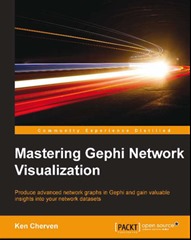 It seems a while since I last reviewed a book here. Today I bring you Gut: The Inside Story of our Body’s Most Underrated Organ by Giulia Enders.
It seems a while since I last reviewed a book here. Today I bring you Gut: The Inside Story of our Body’s Most Underrated Organ by Giulia Enders.
The book does exactly what it says on the tin: tell us about the gut. This is divided into three broad sections. Firstly the mechanics of it all, including going to the toilet and how to do it better. Secondly, the nervous system and the gut, and finally the bacterial flora that help the gut do its stuff.
The writing style seems to be directed at the early to mid-teenager which gets a bit grating in places. Sometimes things end up outright surreal, salmonella wear hats and I still don’t quite understand why. The text is illustrated with jaunty little illustrations.
From the mechanical point of view several things were novel to me: the presence of an involuntary internal sphincter shortly before the well-known external one. The internal sphincter allows “sampling” of what is heading for the outside world giving the owner the opportunity to decide what to do with their external sphincter.
The immune tissue in the tonsillar ring was also a new to me, its job is to sample anything heading towards the gut. This is most important in young children before their immune systems are fully trained. Related to the tonsils, the appendix also contain much immune tissue and has a role in repopulating the bacteria in the large intestine with more friendly sorts of bacteria following a bout of diarrhoea.
The second section, on the nervous system of the gut covers things such as vomiting, constipation and the links between the gut and depression.
The section on the bacterial flora of the gut gathers together some of the stories you may have already heard. For example, the work by Marshall on Helicobactor Pylori and its role in formation of stomach ulcers. What I hadn’t realised is that H. Pylori is not thought to be all bad. Its benefits are in providing some defence against asthma and autoimmune diseases. Also in this section is toxoplasmosis, the cat-born parasite which can effect rats and humans, making them more prone to risk-taking behaviour.
I was delighted to discover the use to which sellotape is put in the detection of threadworms – potential sufferers are asked to collect threadworm eggs from around the anus using sellotape. I can imagine this is an unusual experience which I don’t intend to try without good reason.
There is a small amount of evangelism for breast-feeding and organic food which I found a little bit grating.
As usual with electronic books I hit the references section somewhat sooner than I expected, and here there is a clash with the casual style of the body of the book. Essentially, it is referenced as a scientific paper would be – to papers in the primary literature.
I don’t feel this book has left me with any great and abiding thoughts but on the other hand learning more about the crude mechanics of my body is at least a bit useful.



